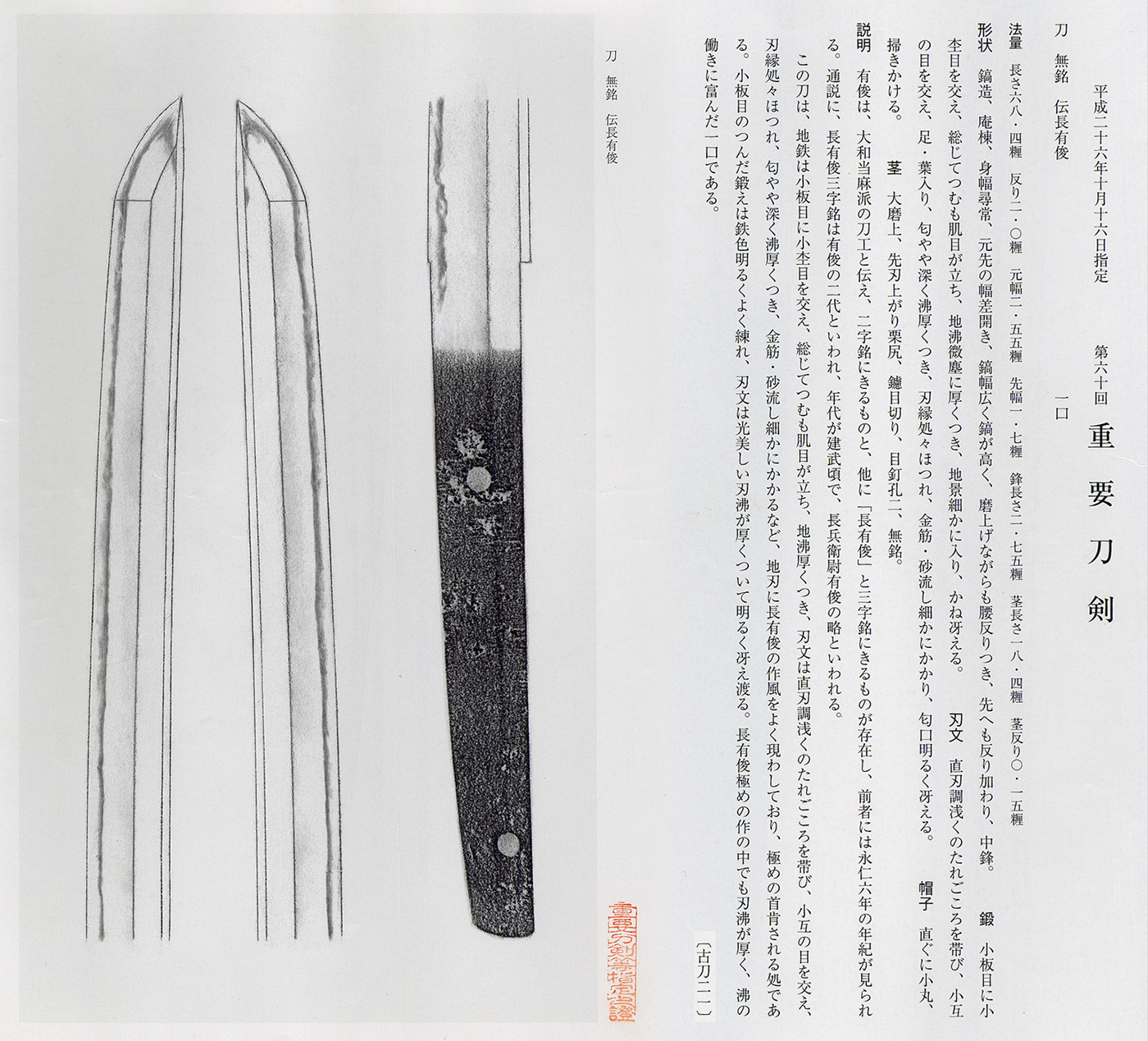Description
Ordering Number: AS24741
Tachi: Shirasaya with Koshirae (The 60th Juyo Token)
Signature: Mumei (attributed to Den Cho Aritoshi 長有俊)
At our company, we classify swordsmiths into four levels: Saijyo Saku (highest), Jyojyo Saku (superior), Jyo Saku (good), and Regular Saku.
This piece is ranked as Saijyo Saku among works attributed to Mumei (Den Cho Aritoshi).
Habaki: gold-plated double habaki
Blade Length: 67.4 cm (26.54 in)
Curvature: 2.2 cm (0.87 in)
Mekugi Hole: 2
Width at Base (Motohaba): 2.6 cm (1.02 in)
Width at Yokote (Sakihaba): 1.75 cm (0.69 in)
Thickness (Kasane): 0.53 cm (0.21 in)
Sword Weight: 535 g
Era: Mid to Late Kamakura period
Shape: Deep curvature with a torii-zori form.
There are no grooves, and the shinogiji is present, allowing the forging patterns of the time to be well observed.
Jigane: The jigane is excellent, with visible hada.
Hamon: A deeply formed nioi-based chu-suguha, with a rich nioiguchi and active sunagashi and kinsuji.
Features: The founder of the Yamato Taima school was active around Ennin 6 (1298), and a smith who signed as Cho Aritoshi is known to have existed in Kenmu 3 (1336).
This sword, designated as a Juyo Token in the 60th session, is particularly noted for its outstanding jigane with a visible hada.
The deep nioiguchi and well-defined chu-suguha, along with clearly visible sunagashi and kinsuji, make it a remarkable work.
This sword is featured on page 402 of Kantō Hibisho Zoku written by Dr. Honma Kunzan.
The entry dated September 13 describes a mumei tachi attributed to Cho Aritoshi:
“O-suriage, blade length 2.25 shaku, two mekugi-ana, slender body with standard kissaki, wide shinogi-ji with slightly high shinogi, forging in itame with large hada near the base on both sides, overall slightly coarse with chikei, ji-nie with rough and glittering nie, small tobiyaki on the ura side, flowing shinogiji in masame.
The hamon is chu-suguha with slight notare, some misalignment on the back, strong nie with visible kinsuji and sunagashi.
These characteristics are consistent with the Yamato tradition, yet different from the five Yamato schools, suggesting a connection to the Senjuin school, and thus the attribution to Aritoshi.”
The sayagaki is also superb.
Koshirae:
Tsuba: Shakudo mokko-gata tsuba with high-relief carving of animals and flowers, accented with gold inlay.
Fuchikashira: Shakudo with high-relief carving of carp, decorated with gold inlay.
Saya: Lacquered scabbard with scattered blue shell inlay (aogai chirashi).
Menuki: Shakudo with high-relief carving of cranes, adorned with gold inlay.
The 60th Juyo Token
Aoi Art estimation paper & Whole Oshigata









 日本語
日本語






